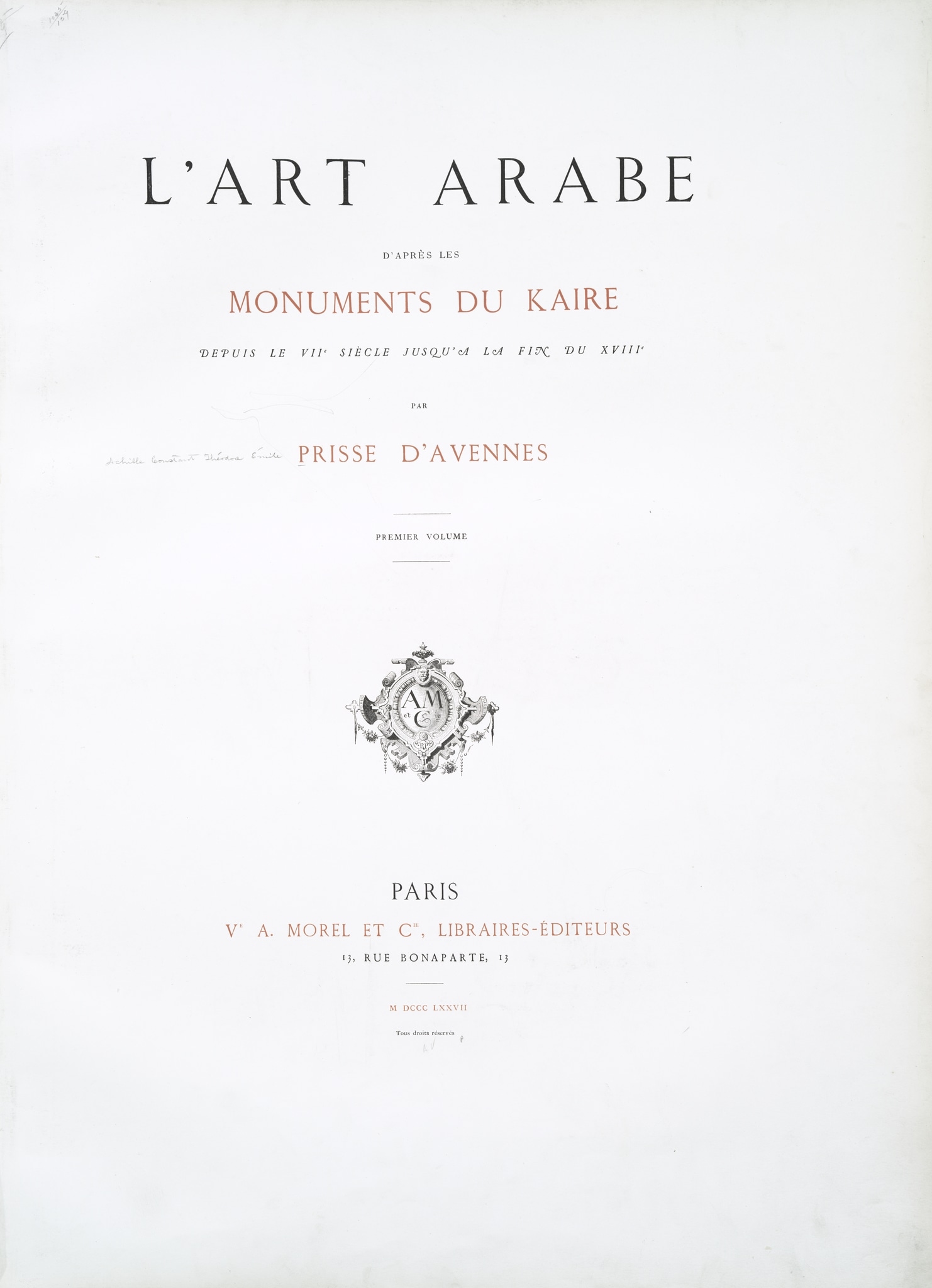1 text volume, 3 volumes of illustrations. Published in Paris, by J. Savoy & Cie.
Text on stucco glass windows:
“Les moucharabyeh sont souvent surmontés de fenêtres à vitraux coloriés, représentant des bouquets de fleurs, des paons ou des arabesques capricieuses, qui diaprent les intérieurs de toutes les couleurs de l'arc-en-ciel. Ces vitrages, qui portent le nom de Qamarieh, ont de 50 à 70 centimètres de largeur sur 70 à 80 de hauteur. Ils sont composés de petits morceaux de verres de couleur, enchâssés quelquefois dans des meneaux de bois, finement découpés, mais plus fréquemment dans une arabesque de plâtre entourée d'un cadre de bois peint” (Prisse d’Avennes, 1869–1877, vol. 1, pp. 154–155).

